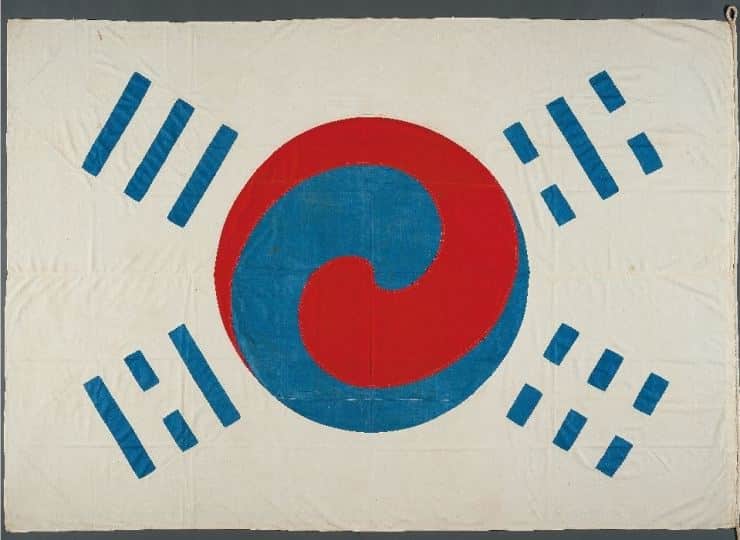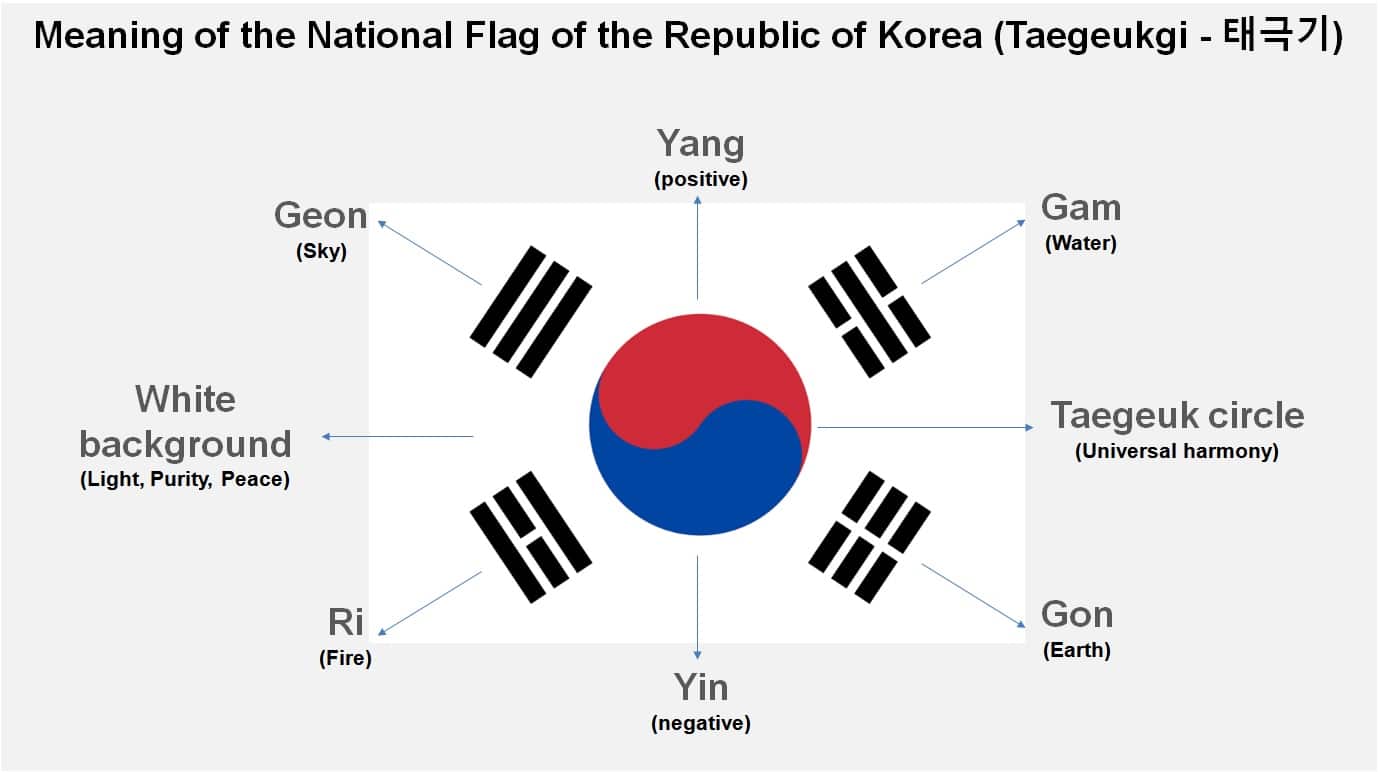What is Gwangbokjeol?
August 15, 2025 marks a historic milestone for South Korea: the 80th anniversary of Gwangbokjeol (광복절), also known as the National Liberation Day. Gwangbokjeol, which translates to “Restoration of Light Day”, celebrates Korea’s independence from 35 years of Japanese colonial rule on August 15, 1945. To many Koreans, the restoration of independence was like the sun rising again after decades of darkness—hence the name “Gwangbok”, or “restoration of light”. The 80th anniversary represents a significant moment of remembrance and reflection for both Koreas as we are reminded of the long and painful road to independence.
How do Koreans Celebrate Gwangbokjeol?
Citizens are encouraged to hang the Korean national flag, the Taegeukgi, outside their homes. Many activities and events take place on this holiday, including an official ceremony attended by the President of Korea at the Independence Hall in Cheonan or at the Sejong Center for the Performing Arts. The official Gwangbokjeol song is sung at official ceremonies.
Taegeukgi (태극기)
The Denny Taegukgi, the oldest surviving Taegukgi design flag, is officially being designated as a national treasure by Korea’s Cultural Heritage Administration (CHA). The Korea Times reports that the Denny Taegukgi flag is believed to have been created in 1890 or earlier, and was owned by Owen Nickerson Denny (1838-1900), an American who worked as one of the principal diplomatic advisers for King Gojong. In 1981, the flag was donated back to Korea by one of Denny’s descendants and is now stored in the National Museum of Korea.

The Taegeukgi is very symbolic. The white background represents peace and purity, the red and blue in the center represent Yin and Yang in balance, and the four black trigrams at the corners symbolize four unique elements.

Who is Dosan Ahn Chang-Ho?
Ahn Chang-Ho (1878 – 1938), also known by his art name Dosan, was an independent activist and educator involved in events such as the assassination of Itō Hirobumi during the Japanese occupation in 1909 and the bombing at Hongkou Park in Shanghai in 1932.
In 1902, Ahn Chang-Ho founded the Korean Friendship Association in San Francisco. Building on this, he established the Korean National Association in 1905, opening night schools and publishing Kongnip Sinbo to uplift and educate Korean immigrants. By 1907, it had become the largest Korean self-governing group in North America.
After learning of the Eulsa Treaty’s signing in November 1905, Ahn Chang-Ho returned to Korea the following year to join the national salvation movement. Ahn advocated for national strength and established the Shinminhoe in 1906. His powerful speeches inspired many young Korean people to join the independence movement. In 1908, he founded Daeseong School in Pyongyang and co-founded the Seobuk Academy in 1909.
In 1907, Itō Hirobumi, then the powerful Resident-General of Korea, argued to Ahn Chang-Ho that Korea needed Japan’s help to modernize. Ahn refuted this, asserting that Korea’s reform must be self-driven and questioning whether Japan would have thrived under similar Western pressures that it imposed on Korea. He revealed Japan’s claim of modernization as a façade for its aggressive expansion
In October 1909, he was arrested by the Japanese for three months on suspicion of involvement in the assassination of Itō Hirobumi by An Jung-geun. He was then exiled to China in 1910, where he held a conference in Shandong Province with nationalist leaders.
To advance his movement, Ahn Chang-Ho left Korea in 1911 to avoid Japanese surveillance and lived in the U.S. with his family until 1919. On May 13, 1913, he founded the Korean National Association (Hyeongsa-dan) in San Francisco, emphasizing integrity, resistance, loyalty, and courage. The organization contributed to the March 1st Movement and the Dongwoo Club Incident. It continues to operate today, based in Dongsoong-dong, Jongno-gu, Seoul, and has branches in various schools.
After the March 1st Movement in 1919, Ahn traveled to Shanghai with the funds he had raised in the USA and took on the roles of Minister of the Interior and Acting Prime Minister in the Provisional Government of The Republic of Korea, where he developed strategies for the independence movement, established the secret communication system, and organized the gathering of independence activists in Shanghai.
In 1921, Ahn Chang-Ho resigned from the Provisional Government after failing to unify its cabinet and called for the National Representative Assembly. In 1923, he became vice-chairman of the assembly in Shanghai, but it failed due to Communist Party influence.
In 1924, Ahn returned to the U.S. and traveled extensively to fortify the Korean National Association (Heungsadan). He went back to China in 1926, and in 1927, while working on unifying military action groups and forming the Great Independence Party in Jilin, Ahn and over 200 associates were detained by Chinese police. They were released after 20 days due to public outcry.
In January 1928, Ahn, along with Yi Dong-nyeong, Yi Si-yeong, Kim Gu, and others, founded the Korean Independence Party in Shanghai and advocated for the Grand Public Doctrine.
In April 1932, while reconsidering plans to establish a base for the independence movement in response to Japan’s policy of invading mainland China, Ahn was arrested by Japanese police in connection with Yoon Bong-gil‘s bombing at Hongkou Park in Shanghai and was extradited to Seoul.
After being sentenced to four years in prison, Ahn served his time at Seodaemun and Daejeon Prisons. After being released on parole after two years and six months in February 1935, he retreated to Songtaesan in Daebosan, Pyeongannam-do.
In June 1937, Ahn was re-arrested by Japanese police in connection with the Dongwoo Association incident and detained with other Heungsadan members. He was released on bail in December due to illness, but sadly, Ahn succumbed to cirrhosis and passed away in March 1938 at Kyungsung Imperial University Hospital. He died before Korea’s long-awaited independence on August 15, 1945—an event he had yearned for.
In 1962, Ahn was posthumously honored with the Order of Merit for National Foundation. Initially interred in Manguri, his remains were transferred to Dosan Park—named in his honor—in November 1973. There, he was reburied alongside his wife, Lee Hye-ryeon, whose remains had previously been in the United States.
Dosan Ahn Chang-ho’s ideology declared, “Patriotism is not about short-term results but long-term change,” emphasizing the importance of unwavering dedication. His leadership was demonstrated through his every action. He proclaimed, “United strength can save a nation,” highlighting the crucial role of cooperation and unity in leadership. Ahn also asserted, “Patriotism is not a goal but a process,” stressing that true patriotism involves continuous growth and learning, not just reaching a destination. His powerful words and remarkable achievements remain a profound source of inspiration, guiding us toward success and a deep sense of patriotism.
Celebrations to look forward to in 2025
This year, cities across South Korea are holding expanded events to honor the country’s 80th anniversary. In cities like Seoul, Busan, Suwon, Gwangju, and more, large public celebrations will showcase traditional music performances, taekwondo demonstrations, and theatrical historical reenactments.
Museums and cultural centers have also announced special exhibits to commemorate Gwangbokjeol’s 80th anniversary. From virtual reality experiences to interactive exhibits, institutions are working to make history come alive—particularly for younger generations who may have no personal connection to that era. Below are a list of events and exhibitions to look forward to on or around August 15th, all of them being free to attend:
Every year on Gwangbokjeol, the Bosingak bell rings out in celebration of liberation. This year, in honor of the 80th anniversary of Korea’s independence, the event will be held on a larger scale than usual. There may also be performances, speeches, and parades held alongside the ceremony, so be sure to check the official Seoul City website for the full schedule and exact times.
2. National Museum of Korea Special Exhibition – 80 Years of Liberation: Rediscovered Faces (국립중앙박물관 특별전 – 광복 80주년, 다시 찾은 얼굴들)
Come see over 110 historical items, including the Jingwansa Temple Taegeukgi and materials related to independence activist Seo Young-hae. These artifacts, designated as National Registered Cultural Heritage in 2025, offer a powerful opportunity to reflect on the meaning of Korea’s liberation.
Under the theme “Memories of Liberation, Revived Through Harmony,” this concert will feature a variety of musical genres conveying the emotion of Korea’s independence. It’s a great opportunity to enjoy everything from classical music to traditional Korean music (gugak) with children!
Experience the moment of Korean independence through digital technology. For the first time in Korea, viewers can appreciate the Denny Taegeukgi — a Korean flag preserved in the United States — brought to life in an immersive video format. Hosted by the National Museum of Korea, the event will be held in Shinsegae Square, Myeongdong.
Looking forward
The 80th anniversary of Gwangbokjeol is a powerful reminder that freedom is never free. As Korea commemorates eight decades of liberation, let us honor the legacy of those who made independence possible. Happy Gwangbokjeol!
Related Articles:
- Celebrating Chuseok: An In-depth Guide to Korean Thanksgiving
- Songpyeon: a Chuseok Staple
- Sebae: 8 Things You May Not Know About This Unique Korean Tradition
- Seollal Tteokguk Made Easy
- Guide to Samiljeol: Korea Independence Movement Day






